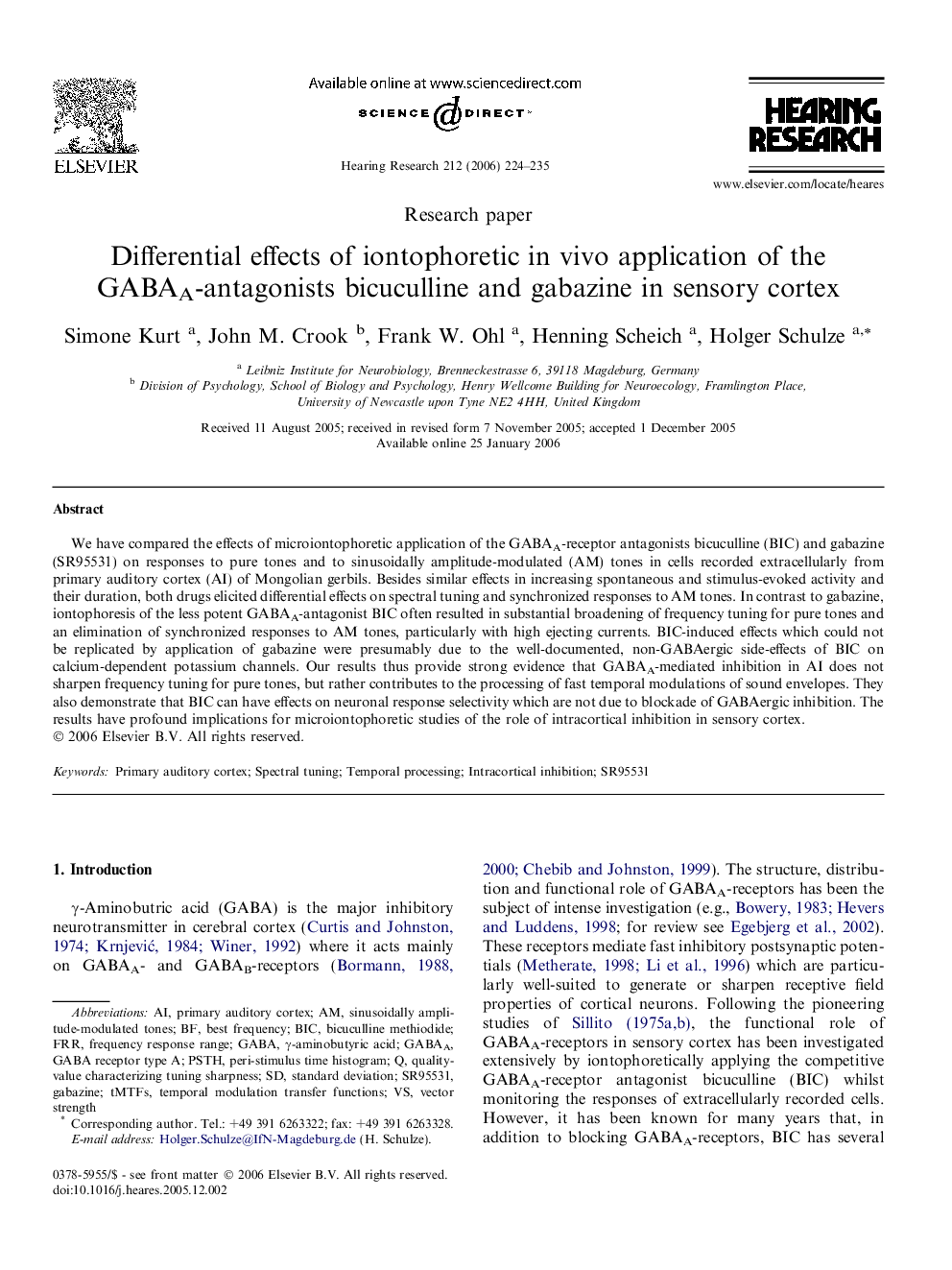| Article ID | Journal | Published Year | Pages | File Type |
|---|---|---|---|---|
| 4356472 | Hearing Research | 2006 | 12 Pages |
We have compared the effects of microiontophoretic application of the GABAA-receptor antagonists bicuculline (BIC) and gabazine (SR95531) on responses to pure tones and to sinusoidally amplitude-modulated (AM) tones in cells recorded extracellularly from primary auditory cortex (AI) of Mongolian gerbils. Besides similar effects in increasing spontaneous and stimulus-evoked activity and their duration, both drugs elicited differential effects on spectral tuning and synchronized responses to AM tones. In contrast to gabazine, iontophoresis of the less potent GABAA-antagonist BIC often resulted in substantial broadening of frequency tuning for pure tones and an elimination of synchronized responses to AM tones, particularly with high ejecting currents. BIC-induced effects which could not be replicated by application of gabazine were presumably due to the well-documented, non-GABAergic side-effects of BIC on calcium-dependent potassium channels. Our results thus provide strong evidence that GABAA-mediated inhibition in AI does not sharpen frequency tuning for pure tones, but rather contributes to the processing of fast temporal modulations of sound envelopes. They also demonstrate that BIC can have effects on neuronal response selectivity which are not due to blockade of GABAergic inhibition. The results have profound implications for microiontophoretic studies of the role of intracortical inhibition in sensory cortex.
